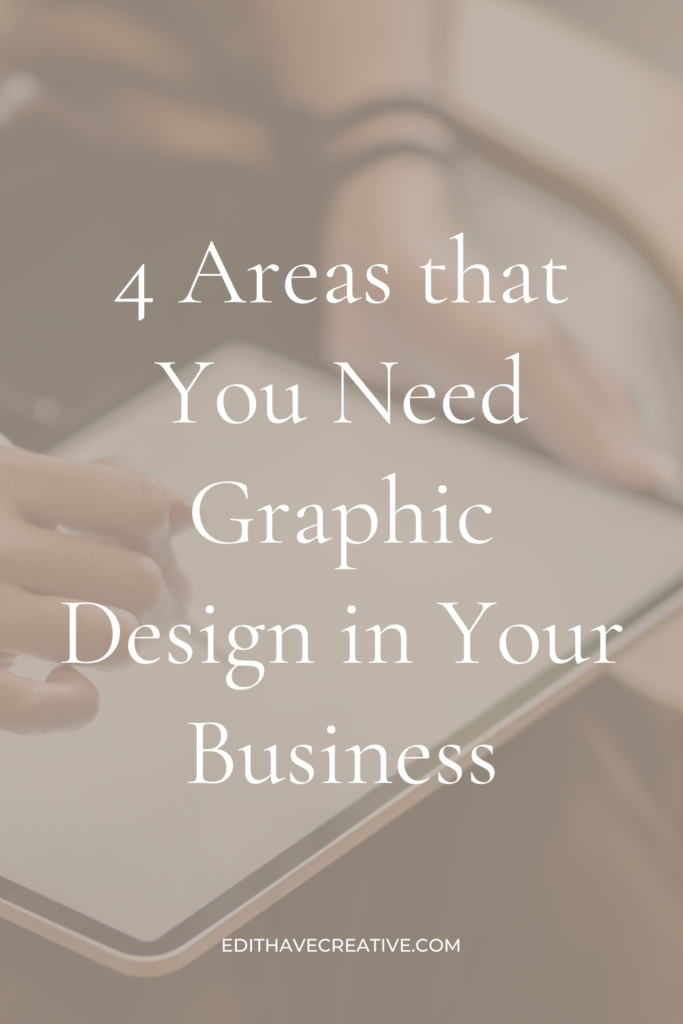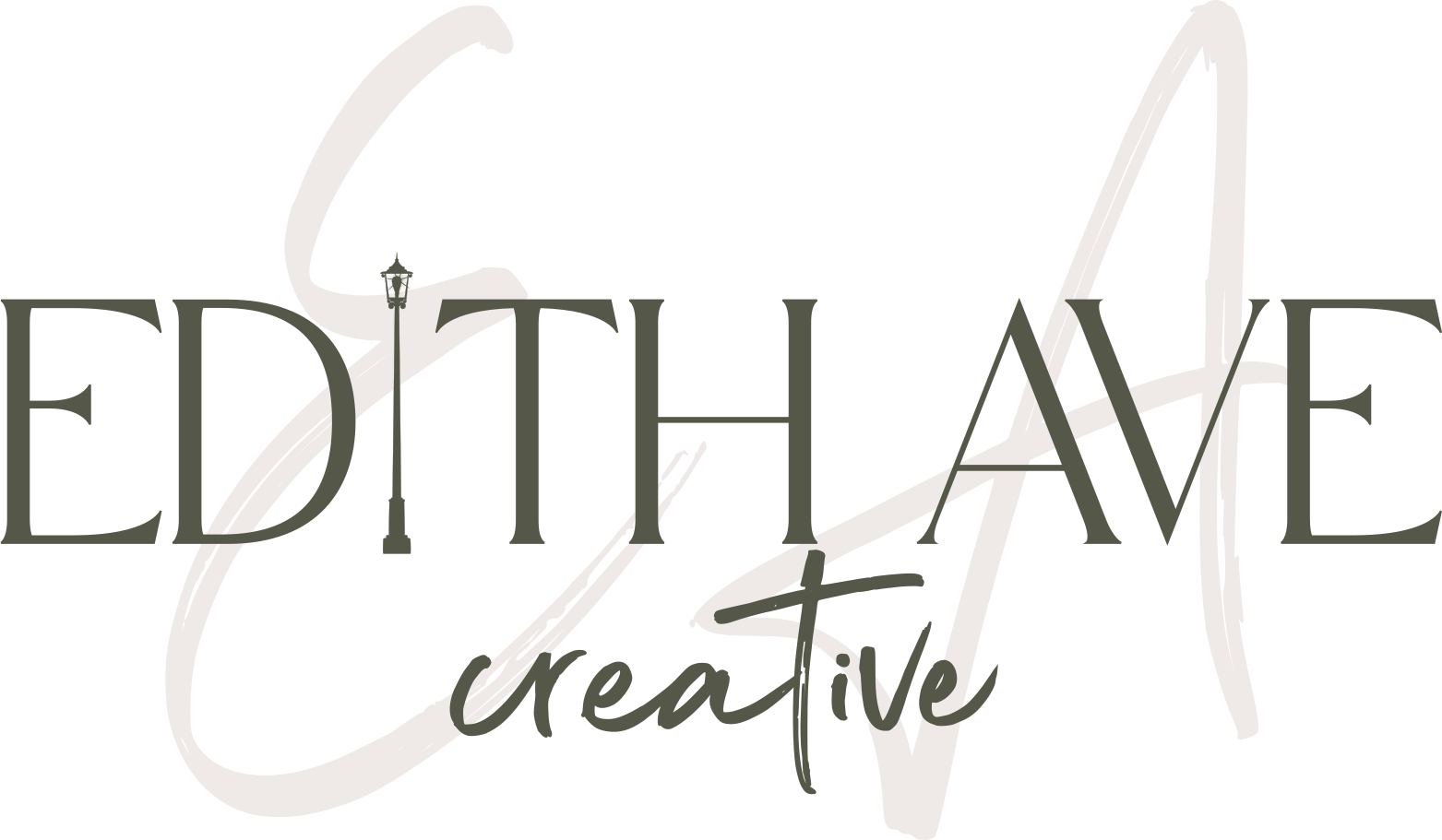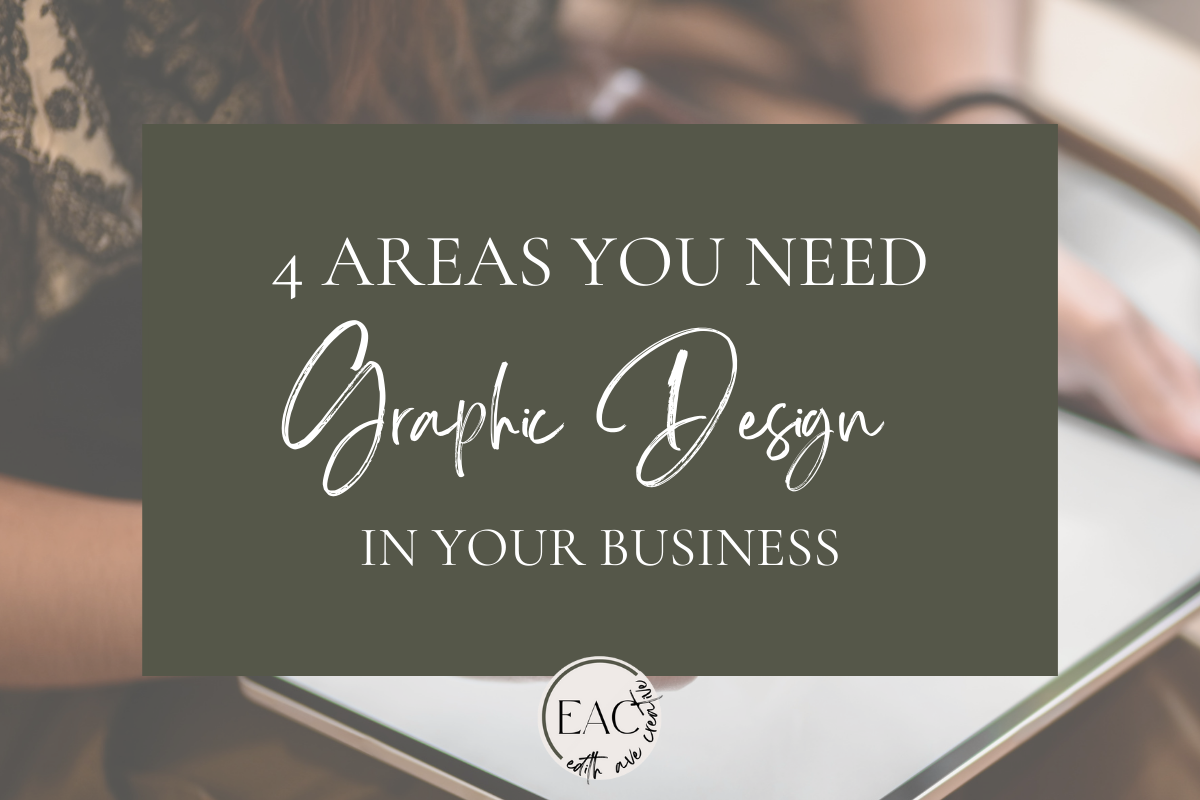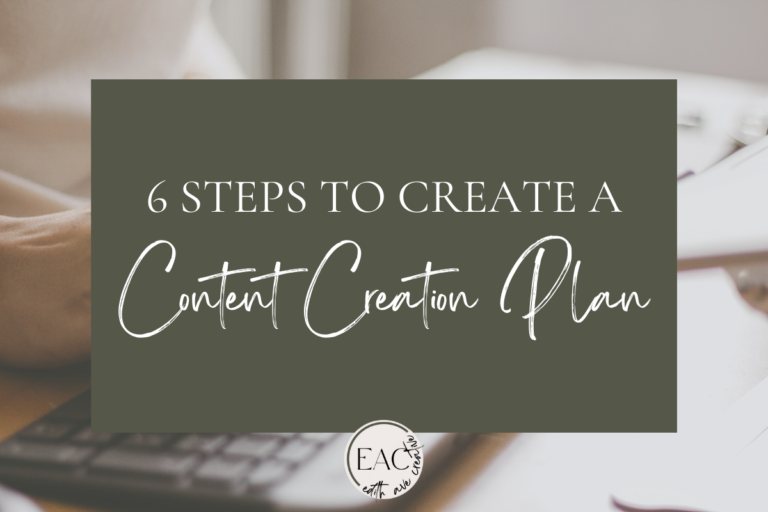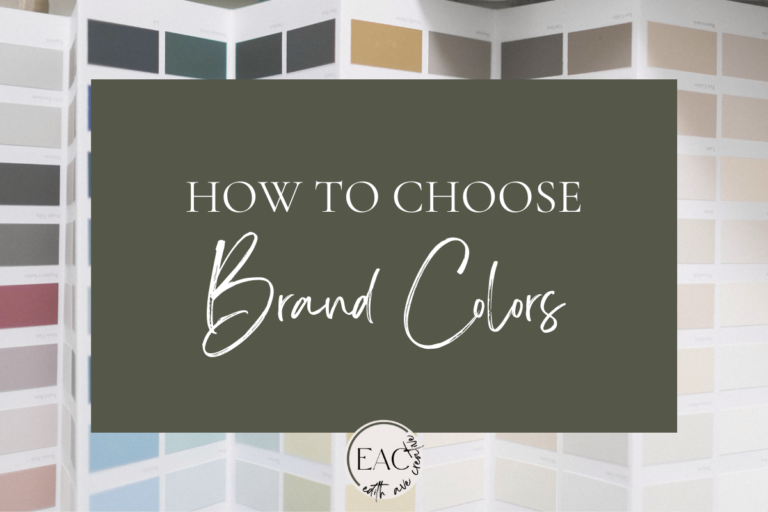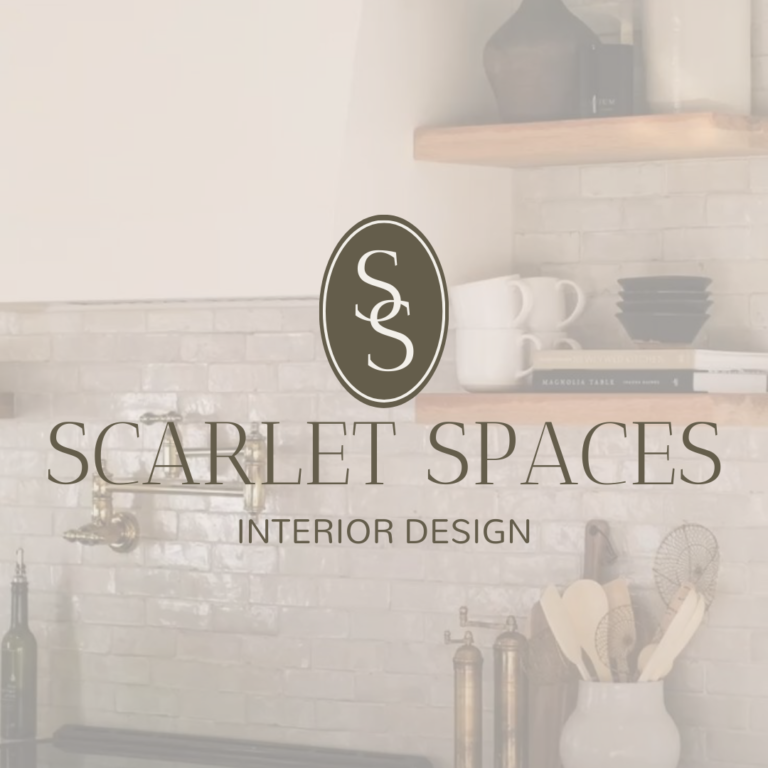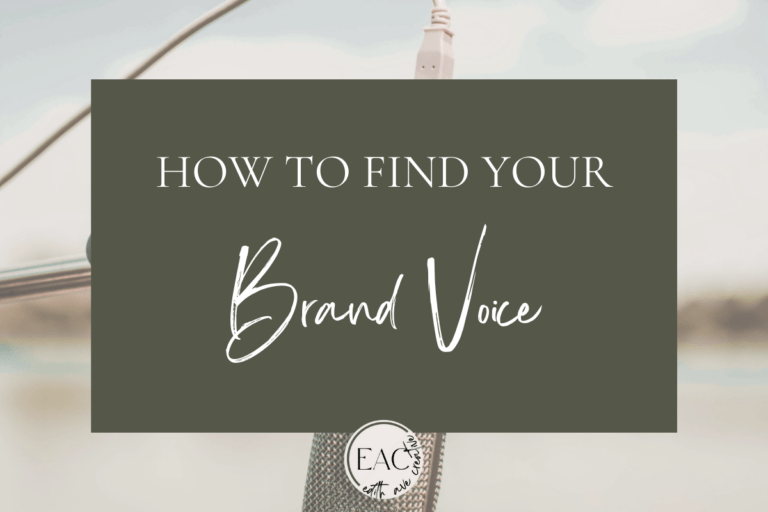Today we’re talking about the four areas you need graphic design for business. If you’re either starting or revamping your business, this is one area where it can be easy to go down rabbit trails trying to figure out what you need to create. Maybe you instead used the strategy of just figuring it out as you need it but then you’re looking back and realizing that it doesn’t give a cohesive image of your brand. Here’s a list of the graphics and templates you can create right at the beginning to save time overall without getting stuck in the weeds.
Brand Identity
If you’ve read any other posts I’ve written, it’s probably no surprise that I’m starting off with brand identity. Most emerging business owners probably create a logo as their first design element for their business. Your brand identity is more than just a logo. It’s a strategic plan of what you want to communicate through colors, fonts, your brand voice, brand elements, and yes, your logo. Check out the free five-day email mini-course to get started creating “More than a Logo” for your business.
Website Design
Your business website is another big area of design for your business. Whether you’re purchasing a template (like the ones available in my shop 😉 ) or having a custom-designed website, there are multiple places within the site that may need design. Blog thumbnail images and graphics for opt-in offers are common. Your site may also use header images.
Social media
When you’re setting up your business, social media is another area that most business owners know they need to use design. A good starting point is to create a social media profile picture that can be used no matter the size requirements. Many platforms use a circle shape for their profile images, so create a design that works with that shape. People connect with people, so using your picture for your profile image is a good way to foster that connection. If you’re not able to use your picture, using your logo is a good alternative to build brand awareness.
Next you’ll want to take a little bit of time to create some post templates for the platforms you’ll be utilizing. Even if you’re using templates made by others, select ones that match your brand and save them so you don’t have to spend time looking for them when you’re creating content. This will also help improve your efficiency when creating content since you can simply plug your content into pre-selected designs and not get distracted by all the design options.
Canva is a great tool for creating these types of designs. As an example, I have one design called “Blog Pinterest Pin Templates” that I can copy a few pre-designed layout pages and just add in the images and edit the text when I’m creating pins for a blog post. It’s good to have some variety to your pins, but don’t feel like you need a new design for every single pin. A person isn’t going to see all your pins at the same time. Having around 10 designs gives plenty of variety.
Instagram is another good use of template images. If you have a couple carousel templates, a few text/quote templates, and a couple text over image templates, you have enough to mix in with images and give variety to your feed while still maintaining a cohesive look overall.
Marketing Collateral
When you hear marketing collateral, think of items like business cards, presentation folders, envelopes, letterhead, newsletters, and welcome packets. Your business may not need all of these items to be physical. Maybe your welcome packet is a digital file that you link to when giving it to your clients. Your newsletter may be built within your email marketing platform, but you can create banner images to use in the emails. Canva is a great free tool to use when creating designs for marketing collateral.
As a business owner, graphic design isn’t just a creative choice; it’s a strategic necessity. It’s the tool that propels your brand into the hearts and minds of your audience, making a lasting impression and fostering connection. Every logo, every social media post, and every piece of marketing collateral is a piece of the visual identity of your business. It’s important to take some time to create a comprehensive and cohesive visual identity in these 4 areas of design for your business. Once you have these created, you can focus on other areas of your business knowing that you’ll have what you need to promote your work and communicate your expertise to your clients.
Action items:
